Efficient Feature-Selection-Based Stacking Model for Stress Detection Based on Chest Electrodermal Activity
Abstract
1. Introduction
1.1. Motivation
1.2. Contribution
- The research presents a stacking model based on three machine learning algorithms (LR, LDA, and QDA) for predicting stress using data from chest-worn sensors.
- The WESAD dataset, which includes the five states of transitory, baseline, stress, amusement, and meditation, was turned into a suitable format for the proposed framework. Next, we performed feature analysis and selected the optimal features based on statistical measures.
- The observed outcome illustrated the efficacy of the proposed stacking technique, achieving 0.99% accuracy. The results revealed that the proposed stacking methodology performed better than traditional and previous studies.
1.3. Organization
2. Related Work
2.1. Wearable-Sensor-Based Methodologies
2.2. Machine and Deep Learning Methodologies
3. Proposed Model
3.1. Dataset Preliminaries
3.2. RESP Features
- The find_peaks mechanism. It gives very good results, but sometimes there were several non-detected peaks.
- As a solution to this problem, we proposed an algorithm called find_duration, which finds the duration only in places where real respiration is detected without error.
- After this algorithm usage, the amplitude can be easily determined.
- As a volume analog, we used the absolute integral of RESP sensor values.
3.3. Data Collection
3.4. Feature Analysis
3.4.1. Z-Score Method
3.4.2. Feature Selection Using SelectKBest Method
3.4.3. Synthetic Minority Over-Sampling Technique (SMOTE)
3.4.4. Normalization
3.5. Machine Learning Classifiers
- Quadratic Discriminant Analysis (QDA): Quadratic discriminant analysis is a classification algorithm that assumes each class follows a quadratic distribution. It estimates class boundaries based on the quadratic discriminant function.
- Linear Discriminant Analysis (LDA): Linear discriminant analysis is a classification algorithm that assumes each class follows a Gaussian distribution. It calculates the optimal linear discriminant functions to separate the classes.
- Logistic Regression (LR): The classification procedure known as logistic regression uses the logistic function to model the connections among the input variables and their possibility of belonging to a certain class.
- Random Forest: Random forest is an ensemble learning method for making predictions incorporating numerous decision trees. The final forecast is obtained by voting after each tree in the forest has been trained using a random portion of the training data.
| Algorithm 1 Algorithm for Stress Prediction. |
|
4. Experimental Results and Discussion
4.1. Evaluation Metrics
4.2. Discussion
- Accuracy and performance: we compared our stress detection model’s accuracy, precision, recall, and F1-score with those reported in previous studies.
- Generalizability: We analyzed the generalizability of our model by considering the diversity and size of the dataset used compared to previous studies. A more extensive and diverse dataset can lead to improved generalization capabilities, enabling our model to perform well on unseen data.
- Efficiency: We assessed our method’s computational efficiency and resource requirements compared to traditional or previous AI-based approaches. This analysis demonstrated the practicality and scalability of our proposed method in real-world healthcare settings.
5. Conclusions
Author Contributions
Funding
Institutional Review Board Statement
Informed Consent Statement
Data Availability Statement
Acknowledgments
Conflicts of Interest
References
- Almadhor, A.; Sampedro, G.A.; Abisado, M.; Abbas, S.; Kim, Y.J.; Khan, M.A.; Baili, J.; Cha, J.H. Wrist-Based Electrodermal Activity Monitoring for Stress Detection Using Federated Learning. Sensors 2023, 23, 3984. [Google Scholar] [CrossRef]
- Ghazal, T.M.; Hasan, M.K.; Alshurideh, M.T.; Alzoubi, H.M.; Ahmad, M.; Akbar, S.S.; Al Kurdi, B.; Akour, I.A. IoT for smart cities: Machine learning approaches in smart healthcare—A review. Future Internet 2021, 13, 218. [Google Scholar] [CrossRef]
- Sabry, F.; Eltaras, T.; Labda, W.; Alzoubi, K.; Malluhi, Q. Machine learning for healthcare wearable devices: The big picture. J. Healthc. Eng. 2022, 2022, 4653923. [Google Scholar] [CrossRef] [PubMed]
- Saleem, K.; Saleem, M.; Ahmad, R.Z.; Javed, A.R.; Alazab, M.; Gadekallu, T.R.; Suleman, A. Situation-aware BDI reasoning to detect early symptoms of COVID-19 using smartwatch. IEEE Sens. J. 2022, 23, 898–905. [Google Scholar] [CrossRef] [PubMed]
- Alqahtani, A.; Alsubai, S.; Sha, M.; Peter, V.; Almadhor, A.S.; Abbas, S. Falling and drowning detection framework using smartphone sensors. Comput. Intell. Neurosci. 2022, 2022, 6468870. [Google Scholar] [CrossRef] [PubMed]
- Javed, A.R.; Sarwar, M.U.; Beg, M.O.; Asim, M.; Baker, T.; Tawfik, H. A collaborative healthcare framework for shared healthcare plan with ambient intelligence. Hum.-Centric Comput. Inf. Sci. 2020, 10, 40. [Google Scholar] [CrossRef]
- Javed, A.R.; Sarwar, M.U.; ur Rehman, S.; Khan, H.U.; Al-Otaibi, Y.D.; Alnumay, W.S. Pp-spa: Privacy preserved smartphone-based personal assistant to improve routine life functioning of cognitive impaired individuals. Neural Process. Lett. 2023, 55, 35–52. [Google Scholar] [CrossRef]
- Mukhtar, H.; Rubaiee, S.; Krichen, M.; Alroobaea, R. An IoT framework for screening of COVID-19 using real-time data from wearable sensors. Int. J. Environ. Res. Public Health 2021, 18, 4022. [Google Scholar] [CrossRef]
- Javed, A.R.; Fahad, L.G.; Farhan, A.A.; Abbas, S.; Srivastava, G.; Parizi, R.M.; Khan, M.S. Automated cognitive health assessment in smart homes using machine learning. Sustain. Cities Soc. 2021, 65, 102572. [Google Scholar] [CrossRef]
- Usman Sarwar, M.; Rehman Javed, A.; Kulsoom, F.; Khan, S.; Tariq, U.; Kashif Bashir, A. Parciv: Recognizing physical activities having complex interclass variations using semantic data of smartphone. Softw. Pract. Exp. 2021, 51, 532–549. [Google Scholar] [CrossRef]
- Shtwai, A.; Abdullah, A.; Mohemmed, S.; Sidra, A.; Michal, G.; Robert, F. Automated Cognitive Health Assessment Based on Daily Life Functional Activities. Comput. Intell. Neurosci. 2023, 2023, 5684914. [Google Scholar]
- Zeng, Q.; Bie, B.; Guo, Q.; Yuan, Y.; Han, Q.; Han, X.; Chen, M.; Zhang, X.; Yang, Y.; Liu, M.; et al. Hyperpolarized Xe NMR signal advancement by metal-organic framework entrapment in aqueous solution. Proc. Natl. Acad. Sci. USA 2020, 117, 17558–17563. [Google Scholar] [CrossRef]
- Lu, S.; Yang, J.; Yang, B.; Yin, Z.; Liu, M.; Yin, L.; Zheng, W. Analysis and Design of Surgical Instrument Localization Algorithm. CMES-Comput. Model. Eng. Sci. 2023, 137, 669–685. [Google Scholar] [CrossRef]
- Hassan, R.; Qamar, F.; Hasan, M.K.; Aman, A.H.M.; Ahmed, A.S. Internet of Things and its applications: A comprehensive survey. Symmetry 2020, 12, 1674. [Google Scholar] [CrossRef]
- Siddiqui, S.Y.; Haider, A.; Ghazal, T.M.; Khan, M.A.; Naseer, I.; Abbas, S.; Rahman, M.; Khan, J.A.; Ahmad, M.; Hasan, M.K.; et al. IoMT cloud-based intelligent prediction of breast cancer stages empowered with deep learning. IEEE Access 2021, 9, 146478–146491. [Google Scholar] [CrossRef]
- Safa, M.; Pandian, A.; Gururaj, H.; Ravi, V.; Krichen, M. Real time health care big data analytics model for improved QoS in cardiac disease prediction with IoT devices. Health Technol. 2023, 13, 473–483. [Google Scholar] [CrossRef]
- Abbas, A.; Alroobaea, R.; Krichen, M.; Rubaiee, S.; Vimal, S.; Almansour, F.M. Blockchain-assisted secured data management framework for health information analysis based on Internet of Medical Things. Pers. Ubiquitous Comput. 2021, 1–14. [Google Scholar] [CrossRef]
- Lu, S.; Yang, B.; Xiao, Y.; Liu, S.; Liu, M.; Yin, L.; Zheng, W. Iterative reconstruction of low-dose CT based on differential sparse. Biomed. Signal Process. Control. 2023, 79, 104204. [Google Scholar] [CrossRef]
- Hayano, J.; Yamamoto, H.; Nonaka, I.; Komazawa, M.; Itao, K.; Ueda, N.; Tanaka, H.; Yuda, E. Quantitative detection of sleep apnea with wearable watch device. PLoS ONE 2020, 15, e0237279. [Google Scholar] [CrossRef] [PubMed]
- Alsubai, S.; Alqahtani, A.; Sha, M.; Abbas, S.; Almadhor, A.; Peter, V.; Mughal, H. Smart home-based complex interwoven activities for cognitive health assessment. J. Sens. 2022, 2022, 3792394. [Google Scholar] [CrossRef]
- Delmastro, F.; Di Martino, F.; Dolciotti, C. Cognitive training and stress detection in mci frail older people through wearable sensors and machine learning. IEEE Access 2020, 8, 65573–65590. [Google Scholar] [CrossRef]
- Gedam, S.; Paul, S. A review on mental stress detection using wearable sensors and machine learning techniques. IEEE Access 2021, 9, 84045–84066. [Google Scholar] [CrossRef]
- Shokouhmand, A.; Yang, C.; Aranoff, N.D.; Driggin, E.; Green, P.; Tavassolian, N. Mean pressure gradient prediction based on chest angular movements and heart rate variability parameters. In Proceedings of the 2021 43rd Annual International Conference of the IEEE Engineering in Medicine & Biology Society (EMBC), Virtual Conference, 1–5 November 2021; pp. 7170–7173. [Google Scholar]
- Javed, A.R.; Ahmed, W.; Pandya, S.; Maddikunta, P.K.R.; Alazab, M.; Gadekallu, T.R. A survey of explainable artificial intelligence for smart cities. Electronics 2023, 12, 1020. [Google Scholar] [CrossRef]
- Javed, A.R.; Shahzad, F.; ur Rehman, S.; Zikria, Y.B.; Razzak, I.; Jalil, Z.; Xu, G. Future smart cities: Requirements, emerging technologies, applications, challenges, and future aspects. Cities 2022, 129, 103794. [Google Scholar] [CrossRef]
- Javed, A.R.; Saadia, A.; Mughal, H.; Gadekallu, T.R.; Rizwan, M.; Maddikunta, P.K.R.; Mahmud, M.; Liyanage, M.; Hussain, A. Artificial Intelligence for Cognitive Health Assessment: State-of-the-Art, Open Challenges and Future Directions. Cogn. Comput. 2023, 1–46. [Google Scholar] [CrossRef]
- Dang, W.; Xiang, L.; Liu, S.; Yang, B.; Liu, M.; Yin, Z.; Yin, L.; Zheng, W. A Feature Matching Method based on the Convolutional Neural Network. J. Imaging Sci. Technol. 2023, 1–11. [Google Scholar] [CrossRef]
- Sheeraz, M.; Aslam, A.R.; Altaf, M.A.B. Multiphysiological Shallow Neural Network-Based Mental Stress Detection System for Wearable Environment. In Proceedings of the 2022 IEEE International Symposium on Circuits and Systems (ISCAS), Austin, TX, USA, 27 May–1 June 2022; pp. 2309–2313. [Google Scholar]
- Statistics—Work-Related Ill Health and Occupational Disease. Available online: https://www.hse.gov.uk/statistics/causdis/ (accessed on 28 March 2023).
- Arza, A.; Garzón-Rey, J.M.; Lázaro, J.; Gil, E.; Lopez-Anton, R.; de la Camara, C.; Laguna, P.; Bailon, R.; Aguiló, J. Measuring acute stress response through physiological signals: Towards a quantitative assessment of stress. Med. Biol. Eng. Comput. 2019, 57, 271–287. [Google Scholar]
- Reis, R.S.; Hino, A.; Añez, C. Perceived stress scale. J. Health Psychol. 2010, 15, 107–114. [Google Scholar] [CrossRef]
- Mozos, O.M.; Sandulescu, V.; Andrews, S.; Ellis, D.; Bellotto, N.; Dobrescu, R.; Ferrandez, J.M. Stress detection using wearable physiological and sociometric sensors. Int. J. Neural Syst. 2017, 27, 1650041. [Google Scholar]
- Javed, A.R.; Sarwar, M.U.; Khan, S.; Iwendi, C.; Mittal, M.; Kumar, N. Analyzing the effectiveness and contribution of each axis of tri-axial accelerometer sensor for accurate activity recognition. Sensors 2020, 20, 2216. [Google Scholar] [CrossRef]
- Zhou, L.; Liu, Y.; Sun, H.; Li, H.; Zhang, Z.; Hao, P. Usefulness of enzyme-free and enzyme-resistant detection of complement component 5 to evaluate acute myocardial infarction. Sensors Actuators B Chem. 2022, 369, 132315. [Google Scholar] [CrossRef]
- Ullah, F.; Chen, X.; Rajab, K.; Reshan, A.; Saleh, M.; Shaikh, A.; Hassan, M.A.; Rizwan, M.; Davidekova, M. An efficient machine learning model based on improved features selections for early and accurate heart disease predication. Comput. Intell. Neurosci. 2022, 2022, 1906466. [Google Scholar] [CrossRef]
- Salai, M.; Vassányi, I.; Kósa, I. Stress detection using low cost heart rate sensors. J. Healthc. Eng. 2016, 2016, 5136705. [Google Scholar] [CrossRef] [PubMed]
- Garg, P.; Santhosh, J.; Dengel, A.; Ishimaru, S. Stress detection by machine learning and wearable sensors. In Proceedings of the 26th International Conference on Intelligent User Interfaces-Companion, College Station, TX, USA, 14–17 April 2021; pp. 43–45. [Google Scholar]
- Kumar, A.; Sharma, K.; Sharma, A. Hierarchical deep neural network for mental stress state detection using IoT based biomarkers. Pattern Recognit. Lett. 2021, 145, 81–87. [Google Scholar] [CrossRef]
- Chen, J.; Abbod, M.; Shieh, J.S. Pain and stress detection using wearable sensors and devices—A review. Sensors 2021, 21, 1030. [Google Scholar] [CrossRef]
- Wang, W.; Chen, Q.; Yin, Z.; Srivastava, G.; Gadekallu, T.R.; Alsolami, F.; Su, C. Blockchain and PUF-based lightweight authentication protocol for wireless medical sensor networks. IEEE Internet Things J. 2021, 9, 8883–8891. [Google Scholar] [CrossRef]
- Sarkar, J.L.; Ramasamy, V.; Majumder, A.; Pati, B.; Panigrahi, C.R.; Wang, W.; Qureshi, N.M.F.; Su, C.; Dev, K. I-Health: SDN-based fog architecture for IIoT applications in healthcare. IEEE/ACM Trans. Comput. Biol. Bioinform. 2022. ahead of print. [Google Scholar] [CrossRef]
- Pandya, S.; Gadekallu, T.R.; Reddy, P.K.; Wang, W.; Alazab, M. InfusedHeart: A novel knowledge-infused learning framework for diagnosis of cardiovascular events. IEEE Trans. Comput. Soc. Syst. 2022, 1–10, early access. [Google Scholar] [CrossRef]
- Hassan, M.A.; Ali, S.; Imad, M.; Bibi, S. New advancements in cybersecurity: A comprehensive survey. Big Data Anal. Comput. Intell. Cybersecur. 2022, 111, 3–17. [Google Scholar]
- Li, R.; Liu, Z. Stress detection using deep neural networks. BMC Med. Inform. Decis. Mak. 2020, 20, 285. [Google Scholar] [CrossRef] [PubMed]
- Priya, A.; Garg, S.; Tigga, N.P. Predicting anxiety, depression and stress in modern life using machine learning algorithms. Procedia Comput. Sci. 2020, 167, 1258–1267. [Google Scholar] [CrossRef]
- Rashid, N.; Mortlock, T.; Al Faruque, M.A. Self-care: Selective fusion with context-aware low-power edge computing for stress detection. In Proceedings of the 2022 18th International Conference on Distributed Computing in Sensor Systems (DCOSS), Los Angeles, CA, USA, 30 May–1 June 2022; pp. 49–52. [Google Scholar]
- Schmidt, P.; Reiss, A.; Duerichen, R.; Marberger, C.; Van Laerhoven, K. Introducing wesad, a multimodal dataset for wearable stress and affect detection. In Proceedings of the 20th ACM International Conference on Multimodal Interaction, Bouder, CO, USA, 16–20 October 2018; pp. 400–408. [Google Scholar]
- Aggarwal, V.; Gupta, V.; Singh, P.; Sharma, K.; Sharma, N. Detection of spatial outlier by using improved Z-score test. In Proceedings of the 2019 3rd International Conference on Trends in Electronics and Informatics (ICOEI), Tirunelveli, India, 23–25 April 2019; pp. 788–790. [Google Scholar]
- Brownlee, J. How to choose a feature selection method for machine learning. Mach. Learn. Mastery 2019, 10. [Google Scholar]
- Chawla, N.V.; Bowyer, K.W.; Hall, L.O.; Kegelmeyer, W.P. SMOTE: Synthetic minority over-sampling technique. J. Artif. Intell. Res. 2002, 16, 321–357. [Google Scholar] [CrossRef]
- Dablain, D.; Krawczyk, B.; Chawla, N.V. DeepSMOTE: Fusing deep learning and SMOTE for imbalanced data. IEEE Trans. Neural Netw. Learn. Syst. 2022, 1–15, early access. [Google Scholar] [CrossRef]
- Al Duhayyim, M.; Abbas, S.; Al Hejaili, A.; Kryvinska, N.; Almadhor, A.; Mohammad, U.G. An Ensemble Machine Learning Technique for Stroke Prognosis. Comput. Syst. Sci. Eng. 2023, 47, 413–429. [Google Scholar] [CrossRef]
- Alsubai, S.; Khan, H.U.; Alqahtani, A.; Sha, M.; Abbas, S.; Mohammad, U.G. Ensemble deep learning for brain tumor detection. Front. Comput. Neurosci. 2022, 16, 1005617. [Google Scholar] [CrossRef]
- Mehmood, M.; Rizwan, M.; Gregus ml, M.; Abbas, S. Machine learning assisted cervical cancer detection. Front. Public Health 2021, 9, 788376. [Google Scholar] [CrossRef] [PubMed]
- Connelly, L. Logistic regression. Medsurg. Nurs. 2020, 29, 353–354. [Google Scholar]
- Hayes, T.L.; Kanan, C. Lifelong machine learning with deep streaming linear discriminant analysis. In Proceedings of the IEEE/CVF Conference on Computer Vision and Pattern Recognition Workshops, Seattle, WA, USA, 14–19 June 2020; pp. 220–221. [Google Scholar]
- Alexandropoulos, S.A.N.; Aridas, C.K.; Kotsiantis, S.B.; Vrahatis, M.N. Stacking strong ensembles of classifiers. In Artificial Intelligence Applications and Innovations, Proceedings of the 15th IFIP WG 12.5 International Conference, AIAI 2019, Hersonissos, Crete, Greece, 24–26 May 2019, Proceedings 15; Springer: Cham, Switzerland, 2019; pp. 545–556. [Google Scholar]
- Zhu, L.; Ng, P.C.; Yu, Y.; Wang, Y.; Spachos, P.; Hatzinakos, D.; Plataniotis, K.N. Feasibility study of stress detection with machine learning through eda from wearable devices. In Proceedings of the ICC 2022-IEEE International Conference on Communications, Seoul, Republic of Korea, 16–20 May 2022; pp. 4800–4805. [Google Scholar]
- Eren, E.; Navruz, T.S. Stress Detection with Deep Learning Using BVP and EDA Signals. In Proceedings of the 2022 International Congress on Human–Computer Interaction, Optimization and Robotic Applications (HORA), Ankara, Turkey, 9–11 June 2022; pp. 1–7. [Google Scholar]
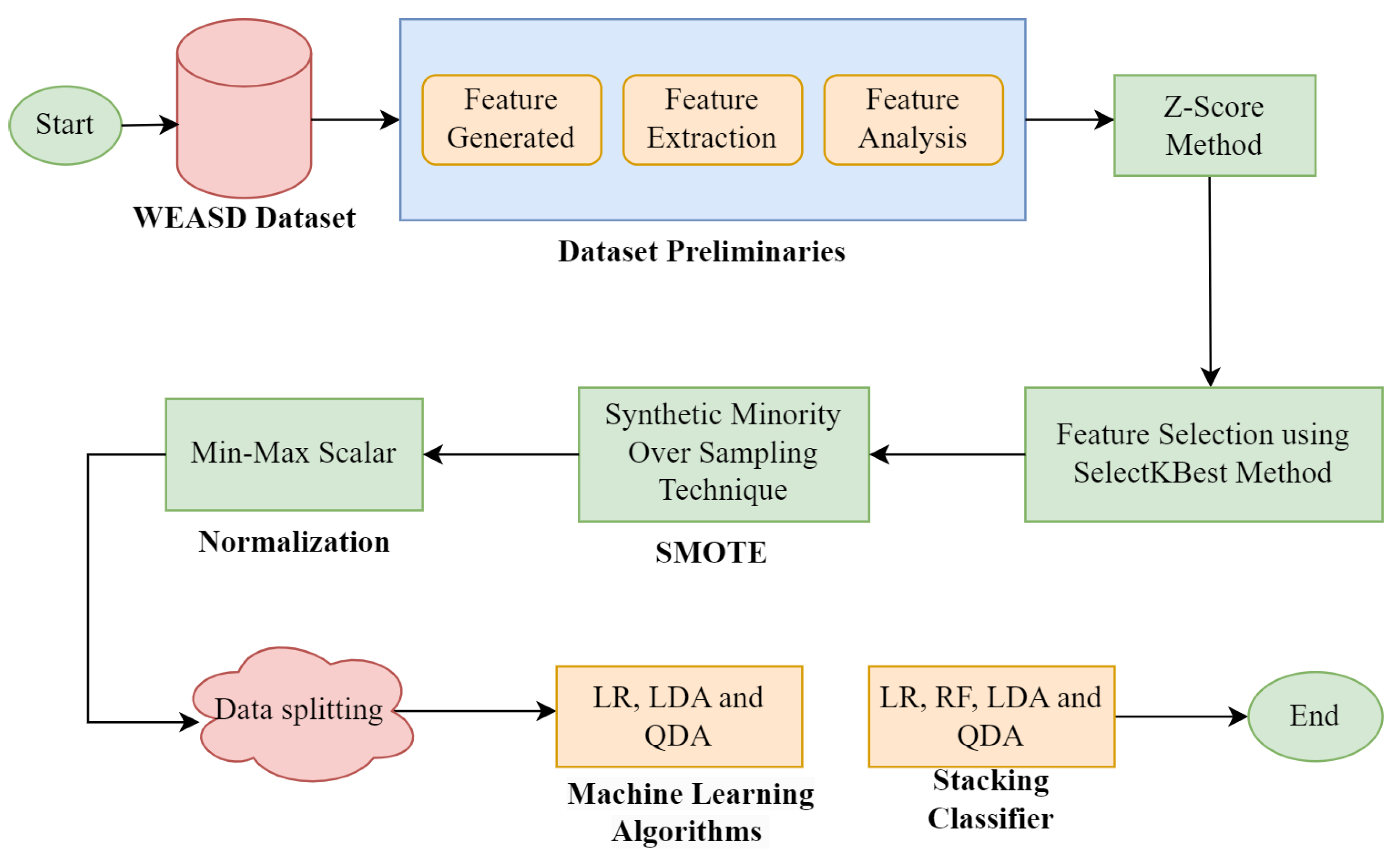

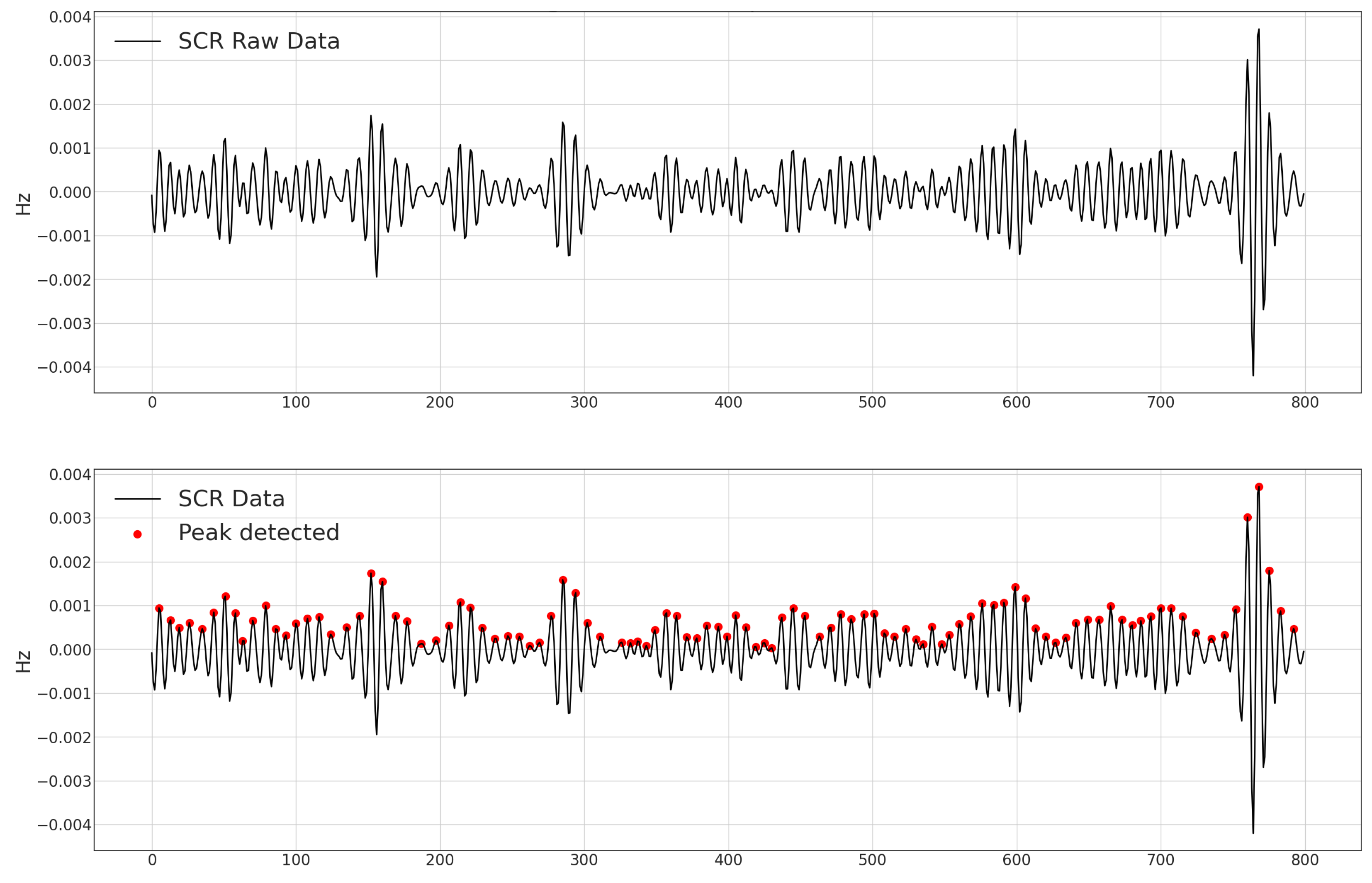
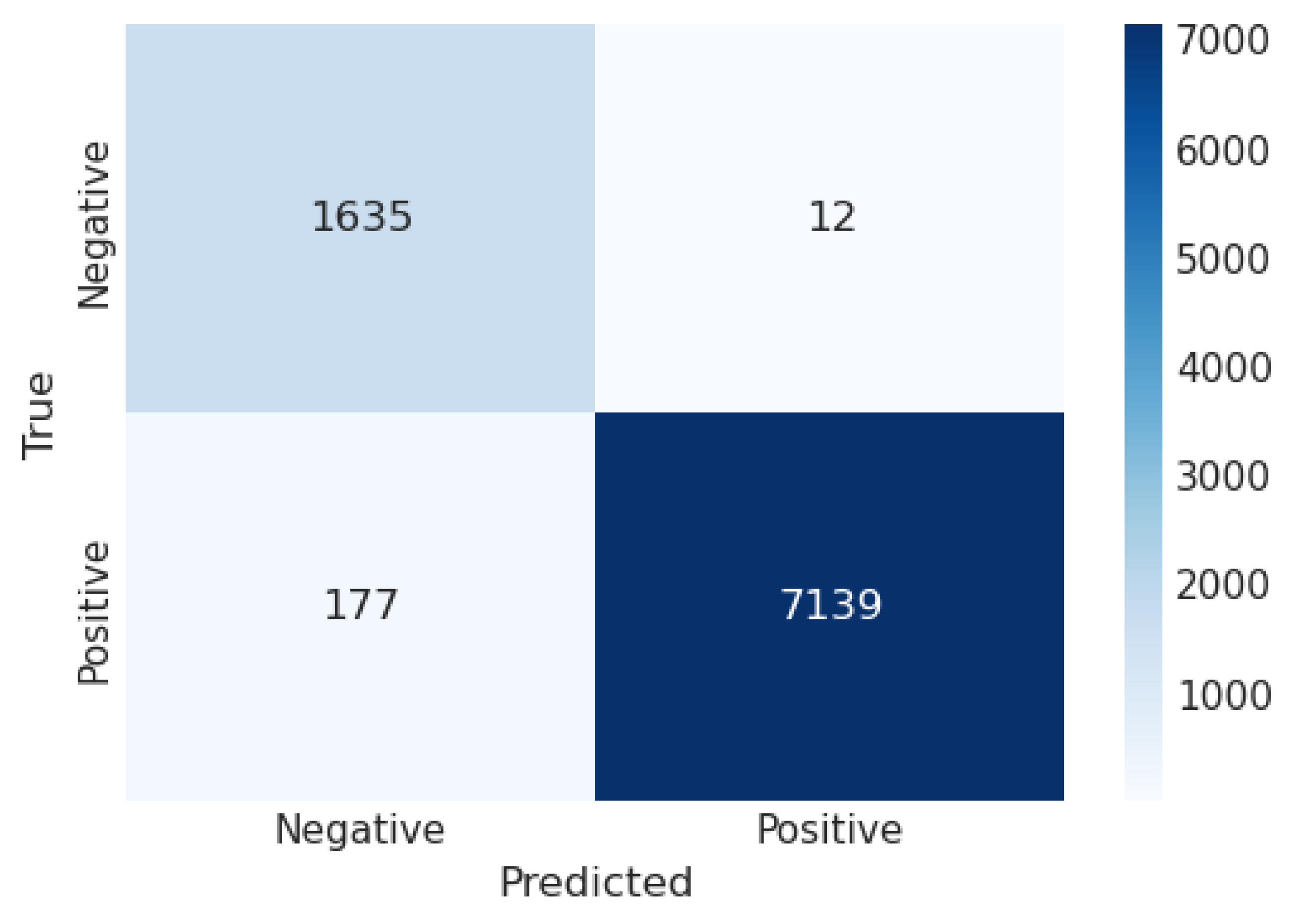
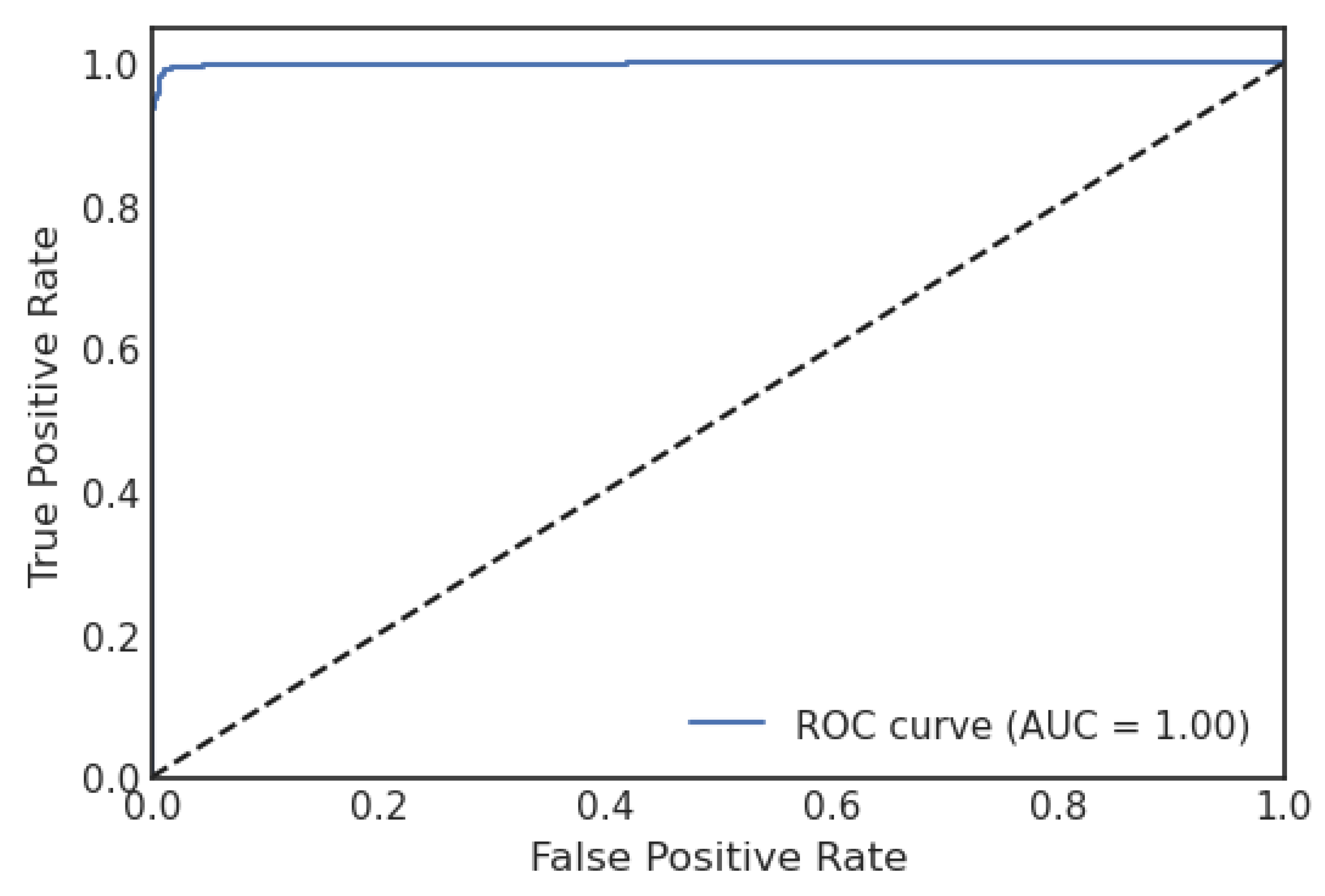
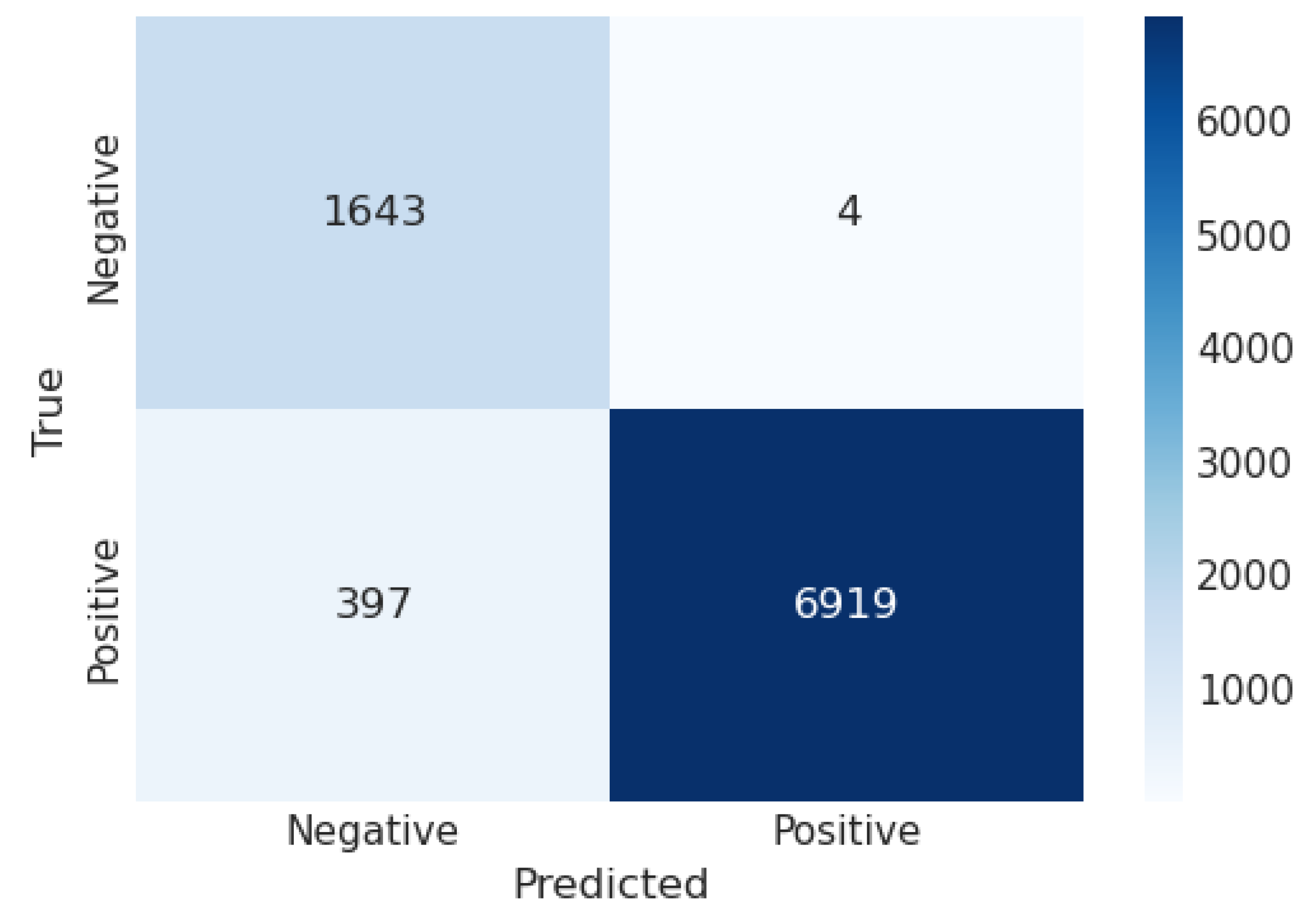
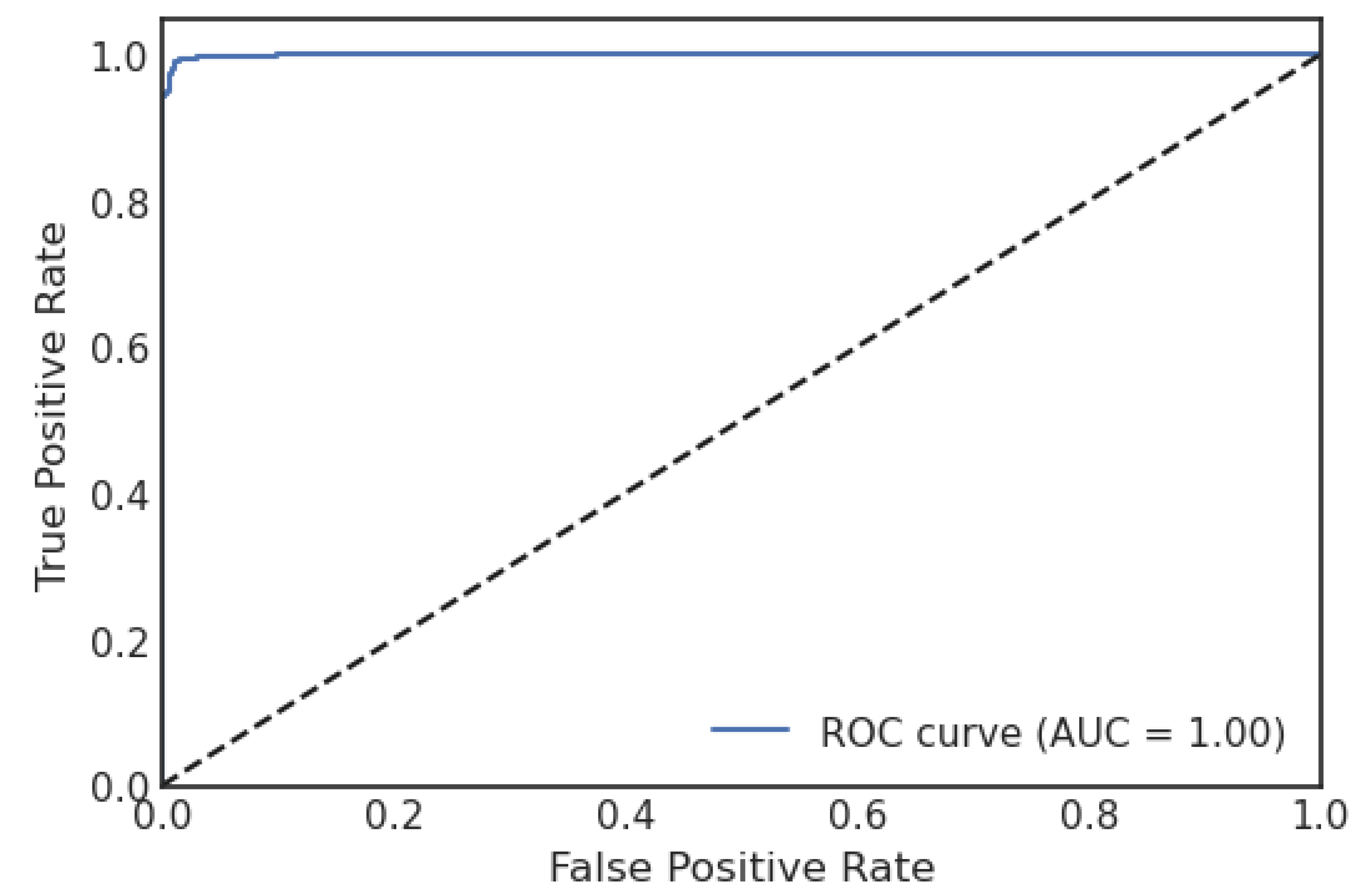
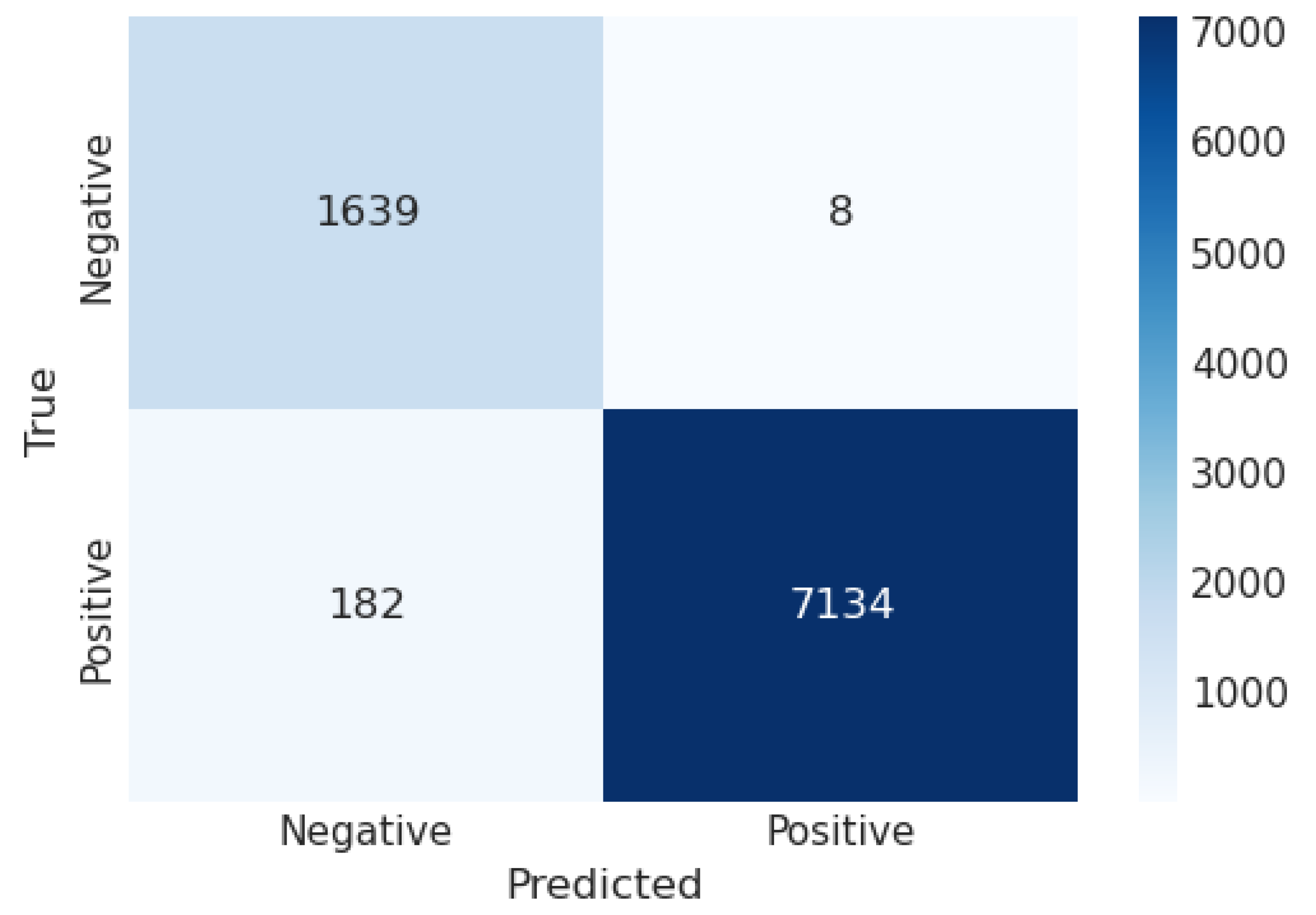
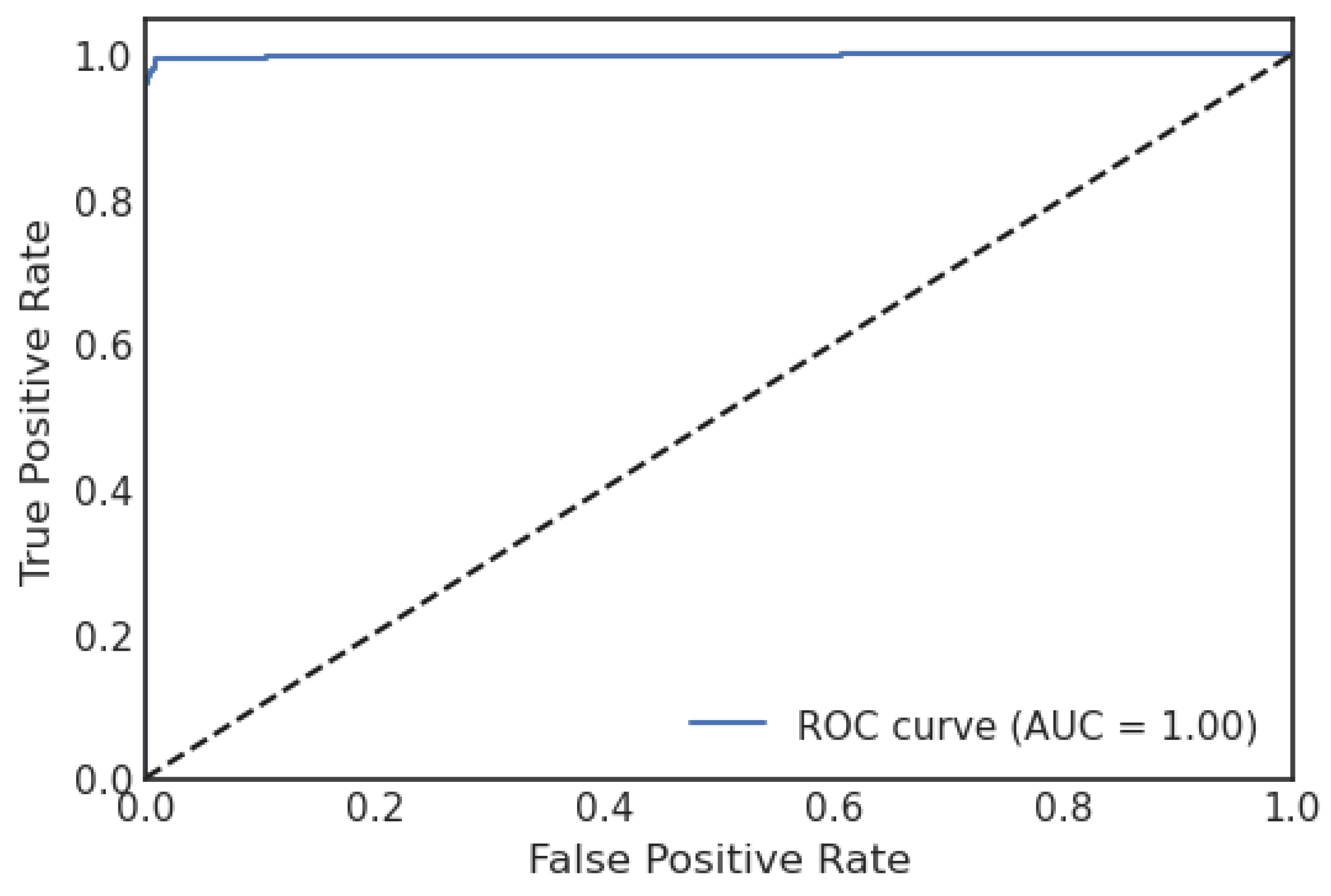
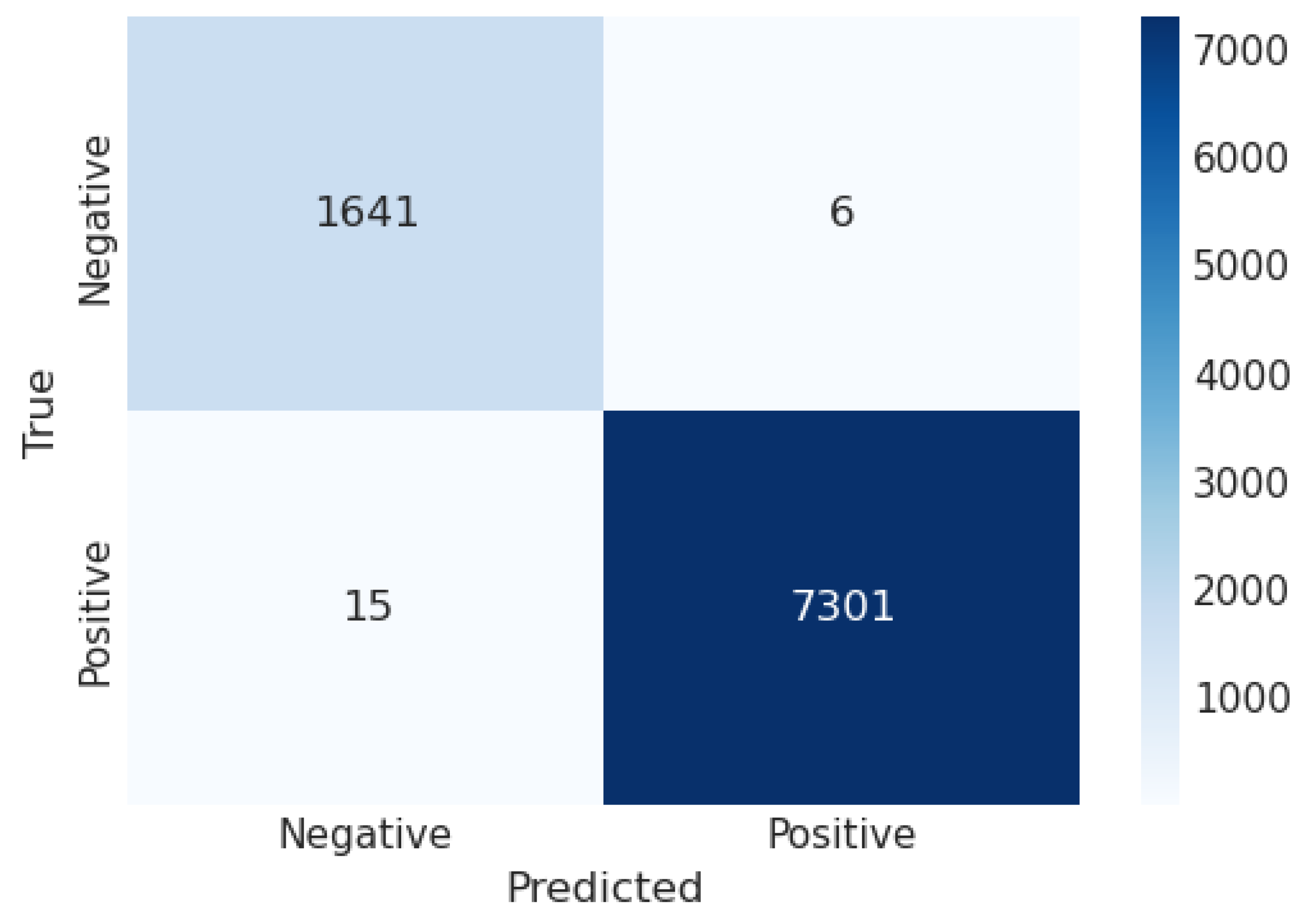

| Model | A% | P% | R% | F1% |
|---|---|---|---|---|
| LR | 0.978 | 0.998 | 0.975 | 0.986 |
| LDA | 0.955 | 0.999 | 0.945 | 0.971 |
| QDA | 0.978 | 0.998 | 0.975 | 0.986 |
| Stacking Model | 0.997 | 0.999 | 0.997 | 0.998 |
Disclaimer/Publisher’s Note: The statements, opinions and data contained in all publications are solely those of the individual author(s) and contributor(s) and not of MDPI and/or the editor(s). MDPI and/or the editor(s) disclaim responsibility for any injury to people or property resulting from any ideas, methods, instructions or products referred to in the content. |
© 2023 by the authors. Licensee MDPI, Basel, Switzerland. This article is an open access article distributed under the terms and conditions of the Creative Commons Attribution (CC BY) license (https://creativecommons.org/licenses/by/4.0/).
Share and Cite
Almadhor, A.; Sampedro, G.A.; Abisado, M.; Abbas, S. Efficient Feature-Selection-Based Stacking Model for Stress Detection Based on Chest Electrodermal Activity. Sensors 2023, 23, 6664. https://doi.org/10.3390/s23156664
Almadhor A, Sampedro GA, Abisado M, Abbas S. Efficient Feature-Selection-Based Stacking Model for Stress Detection Based on Chest Electrodermal Activity. Sensors. 2023; 23(15):6664. https://doi.org/10.3390/s23156664
Chicago/Turabian StyleAlmadhor, Ahmad, Gabriel Avelino Sampedro, Mideth Abisado, and Sidra Abbas. 2023. "Efficient Feature-Selection-Based Stacking Model for Stress Detection Based on Chest Electrodermal Activity" Sensors 23, no. 15: 6664. https://doi.org/10.3390/s23156664
APA StyleAlmadhor, A., Sampedro, G. A., Abisado, M., & Abbas, S. (2023). Efficient Feature-Selection-Based Stacking Model for Stress Detection Based on Chest Electrodermal Activity. Sensors, 23(15), 6664. https://doi.org/10.3390/s23156664







